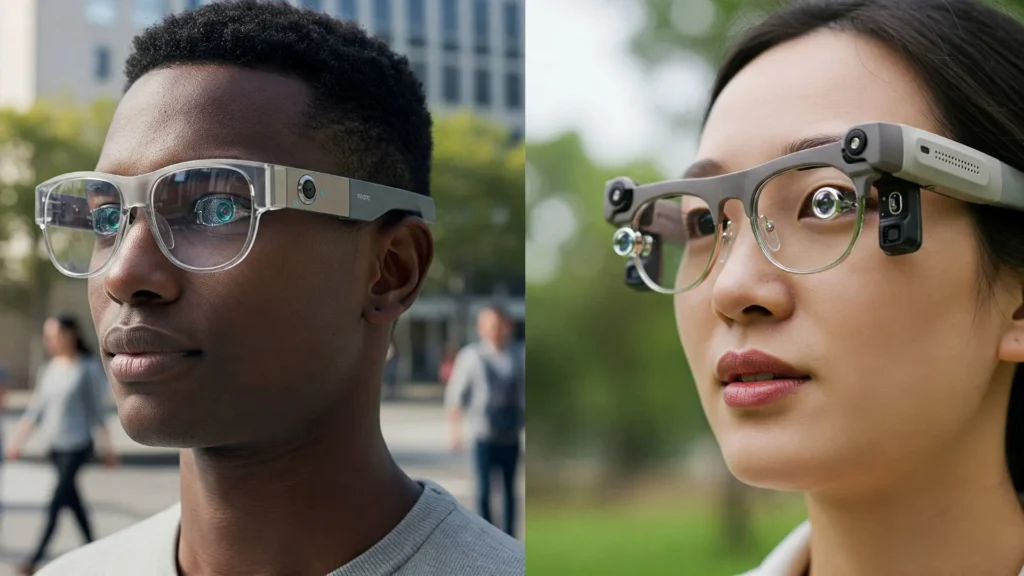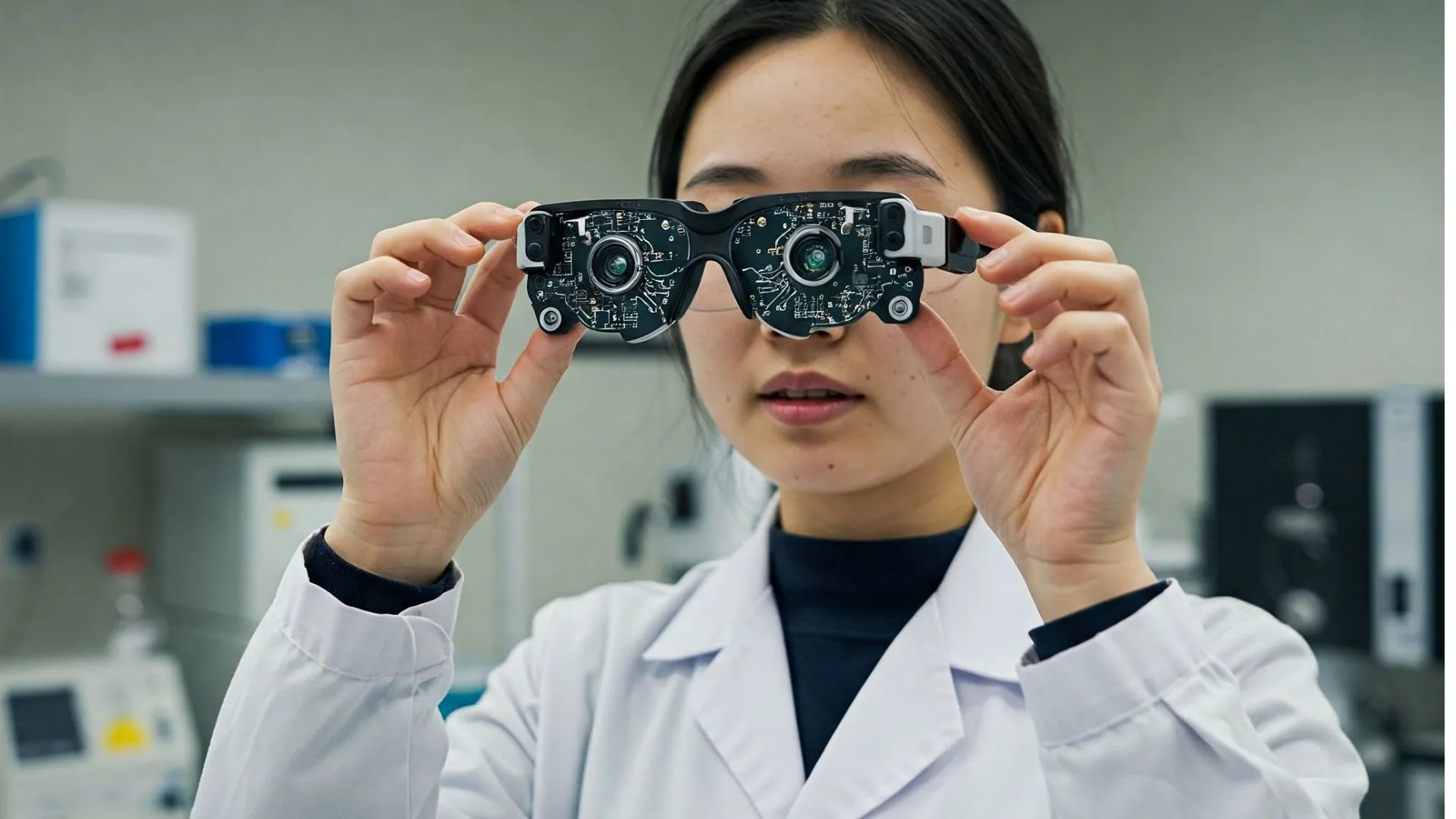Introduction
In a revolutionary leap forward, Chinese researchers have come up with AI-fitted “smart eyes” capable of aiding blind people in movement through the environment with increased mobility. Based on artificial intelligence, computer vision, and live-voice feedback, this cutting-edge technology assists the blind to perceive obstacles, identify objects, and even read speech aloud.
As China continues to be at the forefront of AI innovation, this innovation represents a major leap toward enhancing accessibility for the visually impaired community. But how does the technology function, and how will it change the lives of blind people?
How AI “Eyes” for the Blind Work
The AI-driven assistive device is made up of intelligent glasses with high-resolution cameras and depth sensors. The glasses are linked to a tiny processing unit either built into the frames or worn separately that employs sophisticated AI algorithms to analyze visual information.
Key Features:
- Real-Time Object Recognition – The AI recognizes objects, individuals, and obstacles in the user’s way, giving immediate audio feedback.
- Text-to-Speech Speech Synthesis – The device reads aloud written content from books, billboards, and tags to facilitate daily functions.
- Navigation – Based on examination of the environment, the AI provides safe path suggestions for pedestrians and alerts possible dangers.
- Face Recognition – Familiar face detection is included in some models that enable users to identify family members and friends.
- Voice Command Support – With hands-free interactions, users query or seek details through questions spoken to the device.
This technology is driven by deep learning models that have been trained on large datasets, allowing it to identify thousands of objects and situations with great precision.
China’s Contribution towards AI and Assistive Technology

China has heavily invested in research in AI, with plans to become a leading player in artificial intelligence by the year 2030. This initiative captures the overall objectives of utilizing AI for social benefit, such as healthcare, education, and accessibility.
A number of Chinese technology companies and universities have made these advances, such as:
- Baidu – Creating AI voice assistants and image recognition algorithms.
- SenseTime – Developing facial and object recognition.
- Chinese Academy of Sciences – Researching assistive robotics and AI.
These efforts have been aided by the Chinese government in terms of financing and policy incentives for developing AI for disability aid.
Advantages to the Visually Impaired Community
For the blind and visually impaired, this AI technology provides life-enhancing benefits:
1. Increased Independence
Real-time feedback from the environment enables users to navigate assuredly without having to depend only on canes or guide dogs.
2. Enhanced Safety
The AI identifies approaching vehicles, stairs, and other hazards, decreasing chances of accidents.
3. Expanded Accessibility
Sign reading, menu scanning, and label reading is easy with text-to-speech technology.
4. Social Interaction
Facial recognition enables users to identify individuals nearby, enhancing social interaction.
5. Affordability & Scalability
As AI hardware becomes more affordable, these devices could reach millions of visually impaired individuals worldwide.
Challenges and Future Improvements
While this technology is promising, some challenges remain:
- Battery Life – Continuous camera and AI processing drain power quickly.
- Accuracy in Complex Environments – Crowded or dimly lit areas may reduce detection precision.
- Cost – High-end models may be expensive for low-income users.
Future developments could include:
Lighter, More Discreet Designs – Smaller, glasses-integrated processors.
Offline Capability – Minimizing the use of cloud computing to respond quicker.
Integration with Smarter Cities – Merging AI glasses with urban infrastructure for navigation purposes.
Conclusion
China’s artificial intelligence equipped “eyes” for the blind mark a big milestone in assistive technology. Through the synergy between artificial intelligence and wearable devices, this breakthrough holds the ability to revolutionize the quality of life for countless blind people.
As the technology continues to develop, we can anticipate even more sophisticated features, allowing easier navigation, communication, and independence daily than ever before. With ongoing research and international cooperation, AI may soon eliminate much of the hardship experienced by the blind community, opening the door to a more accessible future.

